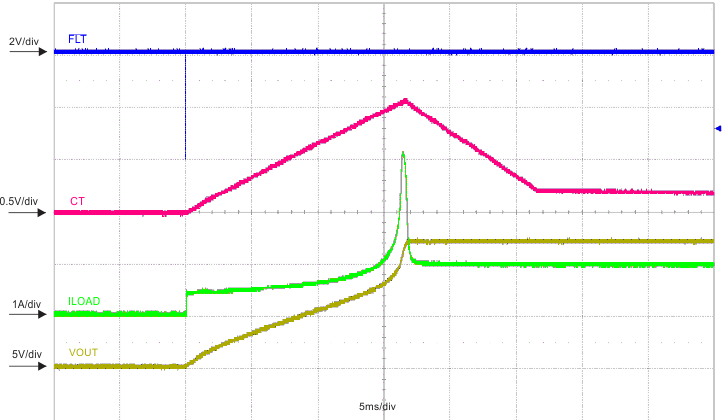SLUS907K January 2009 – June 2019 TPS2421-1 , TPS2421-2
PRODUCTION DATA.
- 1 Features
- 2 Applications
- 3 Description
- 4 Revision History
- 5 Device Comparison Table
- 6 Pin Configuration and Functions
- 7 Specifications
- 8 Detailed Description
- 9 Application and Implementation
- 10Power Supply Recommendations
- 11Layout
- 12Device and Documentation Support
- 13Mechanical, Packaging, and Orderable Information
パッケージ・オプション
メカニカル・データ(パッケージ|ピン)
- DDA|8
サーマルパッド・メカニカル・データ
- DDA|8
発注情報
8.4.2.2 Fault Timer
The fault timer is active when the TPS2421 device is in SOA protect mode or the current is above ISET. Figure 13 illustrates operation during non-faulted startup (CLOAD = 470 µF and IVOUT = 1 A in a 12 V system). CCT charges at approximately 35 µA until TPS2421 device exits SOA protect mode, discharges quickly (approximately 40 µA) to approximately 0.16 V, and then decays slowly (approximately 1.4 µA) towards zero.
 Figure 13. Fault Timer Operation During Startup
Figure 13. Fault Timer Operation During Startup CCT can be chosen for fault-free startup including expected CLOAD and CCT capacitance tolerance as shown in Equation 7.
Equation 7. 
